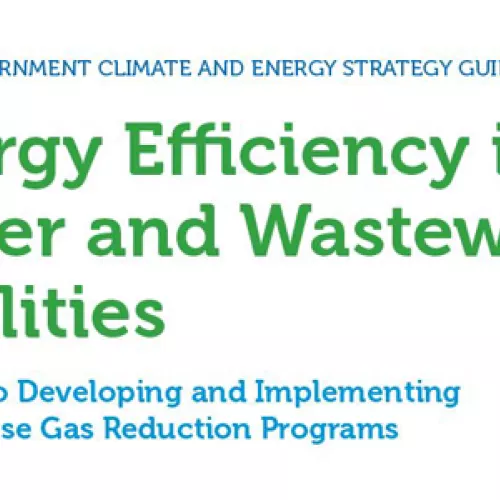According to the EPA in 2012, “drinking water and wastewater systems account for approximately 3-4 percent of energy use in the United States, resulting in the emissions of more than 45 million tons of Greenhouse Gases annually” (Energy Efficiency in Water and Wastewater Facilities 2013).
Water and wastewater treatment, often overlooked yet large consumers of energy, can account for up to 10 percent of a local government’s annual operating budget (DOE in Energy Efficiency, 2013). Water and wastewater facilities can be among the highest consumers of energy in a community due to pumps, motors, and other equipment operating 24 hours a day, seven days a week.
Luckily, methods of water efficiency and conservation are appearing in communities across the nation. Simple solutions such as low-flow plumbing fixtures (think our current CERTified Campaigns: Make a Splash!), coupled with action on a larger scale—primarily through local governments—are all leading us to a less wasteful future. In order to support and kindle this future, the U.S. Environmental Protection Agency (EPA) has published a document entitled Energy Efficiency in Water and Wastewater Facilities: A Guide to Developing and Implementing Greenhouse Gas Reduction Programs. The guide is available to the public and contains many thought-provoking and enlightening statistics like the ones mentioned above.
This guide is an excellent opportunity for citizens, local government staff, and policy makers to learn about water efficiency and conservation, and then work together to implement programs to help save their communities energy and money. You may view or download the guide here.
Below is one of many diagrams helping to explain the complexities of water and wastewater treatment that can be found in the guide.
But water and wastewater improvements are not the only efficiency measures that can be taken. You can do even more with the Guaranteed Energy Savings Program (GESP)!
The main goal of the Guaranteed Energy Savings Program (GESP) is to provide technical and financial assistance to state agencies, local government units, school districts, and institutions of higher learning looking to finance energy improvements. Through energy saving performance contracts, GESP allows organizations to accomplish projects in a budget neutral way. Learn more >>


